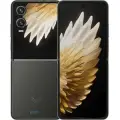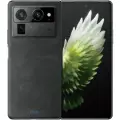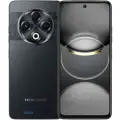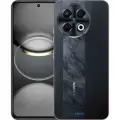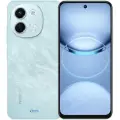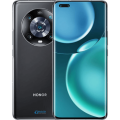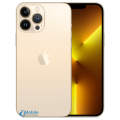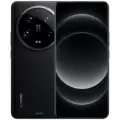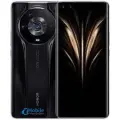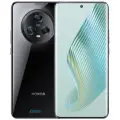Motorola Razr 40 vs Motorola Razr 40 Ultra: A Comprehensive Comparison
Motorola has been a prominent player in the smartphone industry for a long time, and its Razr series is one of the most iconic lineups. The company has recently launched two new devices in this series: Motorola Razr 40 and Motorola Razr 40 Ultra. These two phones have a lot in common, but they also differ in various aspects. In this article, we will compare Motorola Razr 40 vs. Motorola Razr 40 Ultra to help you decide which one is the better choice for you.
Design and Build Quality Comparison Both the Motorola Razr 40 and Motorola Razr 40 Ultra have a similar design language, with a clamshell form factor that folds vertically. However, the Ultra variant is slightly bigger and thicker than the standard Razr 40. The Ultra variant also has a more premium build quality, with a stainless steel frame and a glass back panel. On the other hand, the standard Razr 40 has an aluminium frame and a plastic back panel.
Display Comparison The display is one of the most significant differences between the two phones. The Motorola Razr 40 Ultra has a larger and higher resolution display than the standard Razr 40. It features a 6.9-inch OLED panel with a resolution of 2640 x 1080 pixels, while the standard Razr 40 has a 6.2-inch OLED panel with a resolution of 2142 x 876 pixels. The Ultra variant also has a higher refresh rate of 144Hz compared to the 90Hz of the standard Razr 40.
Key Takeaways
- The Motorola Razr 40 and Motorola Razr 40 Ultra have a similar design language, but the Ultra variant is slightly bigger and thicker than the standard Razr 40.
- The Motorola Razr 40 Ultra has a larger and higher resolution display than the standard Razr 40, with a higher refresh rate of 144Hz compared to the 90Hz of the standard Razr 40.
- The Motorola Razr 40 Ultra is more expensive than the standard Razr 40, but it offers better performance, camera, and battery life.
Design and Build Quality Comparison
The Motorola Razr 40 and the Motorola Razr 40 Ultra have a similar design, but there are some differences in their build quality.
Both phones have a flip design with a foldable display, which is a signature feature of the Razr series. The external displays of both phones are OLED with a resolution of 600 x 800 pixels. However, the external display of the Razr 40 Ultra is larger than that of the Razr 40, measuring 2.7 inches compared to 2.4 inches.
The Razr 40 and the Razr 40 Ultra have different dimensions and weight. The Razr 40 measures 166.9 x 79.79 x 7.62 mm and weighs 183 g, while the Razr 40 Ultra measures 174.6 x 86.4 x 8.5 mm and weighs 208 g. The Razr 40 Ultra is slightly thicker and heavier than the Razr 40.
Both phones have a glass front, a glass back, and an aluminium frame. However, the Razr 40 Ultra has a stainless steel hinge, while the Razr 40 has a plastic hinge. The stainless steel hinge of the Razr 40 Ultra is more durable and provides a smoother folding experience.
In terms of color options, the Razr 40 is available in two colors: Polished Graphite and Liquid Mercury, while the Razr 40 Ultra is available in three colors: Polished Graphite, Liquid Mercury, and Blush Gold.
Overall, the Razr 40 Ultra has a slightly better build quality than the Razr 40 due to its larger external display, stainless steel hinge, and slightly thicker and heavier body. However, both phones have a premium look and feel, and are built to withstand daily wear and tear.
Display Comparison
The Motorola Razr 40 and the Motorola Razr 40 Ultra have different display specifications, which can affect the overall user experience. Here is a comparison of their display specifications:
| Display Specification | Motorola Razr 40 | Motorola Razr 40 Ultra |
|---|---|---|
| Type | Foldable P-OLED | Foldable P-OLED |
| Size | 6.2 inches | 6.9 inches |
| Resolution | 876 x 2142 pixels | 1080 x 2640 pixels (Full HD+) |
| Cover Display Size | 2.7 inches | 3.0 inches |
The Motorola Razr 40 has a smaller main display than the Motorola Razr 40 Ultra, with a size of 6.2 inches compared to 6.9 inches. However, the Motorola Razr 40 has a higher resolution than the Motorola Razr 40 Ultra, with 876 x 2142 pixels compared to 1080 x 2640 pixels (Full HD+). This means that the Motorola Razr 40 may offer a sharper display than the Motorola Razr 40 Ultra.
Both devices come with a foldable P-OLED display, which offers a unique user experience. The foldable design allows the device to be more compact and portable when folded while offering a larger display when unfolded.
In terms of cover display size, the Motorola Razr 40 has a smaller cover display than the Motorola Razr 40 Ultra, with a size of 2.7 inches compared to 3.0 inches. This means that the Motorola Razr 40 Ultra’s cover display may offer a better user experience for quick access to notifications and basic functions without having to unfold the device.
Performance Comparison
When it comes to performance, the Motorola Razr 40 and the Motorola Razr 40 Ultra are both equipped with powerful hardware to provide a smooth and responsive user experience. Let’s take a closer look at the key specifications of each device.
Processor
The Motorola Razr 40 is powered by a Qualcomm Snapdragon 888 processor, which is a flagship-level chipset that delivers excellent performance across the board. The Snapdragon 888 features a tri-cluster architecture with one high-performance core, three high-efficiency cores, and four power-efficient cores. This allows the processor to balance performance and power consumption based on the task at hand.
On the other hand, the Motorola Razr 40 Ultra is equipped with the same Snapdragon 888 processor, but with a higher clock speed. This means that the Ultra variant can handle more demanding tasks with ease, such as gaming or video editing.
RAM
Both the Motorola Razr 40 and the Motorola Razr 40 Ultra come with 8GB of RAM, which is more than enough for most users. The high amount of RAM ensures that the device can handle multiple apps and tasks simultaneously without any lag or slowdown.
Internal Storage
The Motorola Razr 40 and the Motorola Razr 40 Ultra both come with 256GB of internal storage. This should be sufficient for most users, but if you need more storage, there is no option to expand it via a microSD card.
Overall, both the Motorola Razr 40 and the Motorola Razr 40 Ultra offer excellent performance and should be able to handle anything you throw at them. However, if you need the absolute best performance, the Ultra variant is the way to go, thanks to its higher clock speed.
Camera Comparison
The camera is an essential feature of any smartphone. Both Motorola Razr 40 and Motorola Razr 40 Ultra come with impressive cameras, but there are some differences between the two models.
Primary Camera
The primary camera of the Motorola Razr 40 Ultra has a 108 MP sensor, while the primary camera of the Motorola Razr 40 has a 64 MP sensor. The Ultra model’s camera is capable of capturing more details and producing sharper images. It also supports 8K video recording, which is not available on the regular Razr 40.
Both models have optical image stabilization (OIS) and phase detection autofocus (PDAF) features. However, the Ultra model has laser autofocus as well, which helps in faster and more accurate focusing.
Secondary Camera
The secondary camera of the Motorola Razr 40 Ultra has a 16 MP sensor, while the secondary camera of the Motorola Razr 40 is an 8 MP sensor. The Ultra model’s secondary camera is capable of capturing more details and producing sharper images. It also supports 4K video recording, which is not available on the regular Razr 40.
Both models have a single front-facing camera with a 32 MP sensor. The front-facing camera of the Ultra model is capable of capturing more details and producing sharper images.
In conclusion, the Motorola Razr 40 Ultra has a better camera setup than the regular Razr 40. It has a higher resolution primary and secondary camera, laser autofocus, and supports 8K and 4K video recording. However, the regular Razr 40 still has a decent camera setup and can capture good-quality images and videos.
Battery Life Comparison
When it comes to battery life, the Motorola Razr 40 Ultra has a slightly larger battery capacity than the Motorola Razr 40. The Razr 40 Ultra comes with a 4200 mAh battery, while the Razr 40 has a 3800 mAh battery. However, it is important to note that battery life can vary depending on usage and other factors.
According to GSMArena, the battery life of the Motorola Razr 40 is rated at 85 hours, while the battery life of the Motorola Razr 40 Ultra is not yet available. It is expected that the larger battery capacity of the Razr 40 Ultra will provide longer battery life compared to the Razr 40.
It is worth noting that both phones come with non-user-replaceable batteries. This means that if the battery needs to be replaced, it must be done by a professional.
Overall, while the Motorola Razr 40 Ultra has a larger battery capacity, it is important to consider other factors such as usage and standby time when comparing battery life between the two phones.
Software Comparison
Both the Motorola Razr 40 and the Motorola Razr 40 Ultra run on Android 13 with My UX 10.1. However, the Motorola Razr 40 Ultra comes with a few additional software features that are not available on the Motorola Razr 40.
One of the most notable software features of the Motorola Razr 40 Ultra is the ability to use the outer display as a touchpad. This means that users can use the outer display to navigate the phone without having to flip it open. Additionally, the Motorola Razr 40 Ultra comes with a new multi-window feature that allows users to run multiple apps simultaneously on the same screen.
Another difference between the two phones is the amount of bloatware that comes pre-installed. The Motorola Razr 40 Ultra comes with fewer pre-installed apps compared to the Motorola Razr 40, which means that users will have more storage space available out of the box.
Overall, while both phones run on the same version of Android, the Motorola Razr 40 Ultra offers a few additional software features that may be worth considering for some users.
Additional Features Comparison
When it comes to additional features, the Motorola Razr 40 Ultra has a few advantages over the regular Razr 40. Here is a comparison of some of the key additional features:
- Exterior Display: One of the most notable differences between the two phones is the size of the exterior display. The Razr 40 Ultra has a larger 6.9-inch display, compared to the 6.2-inch display on the Razr 40. This larger display makes it easier to see notifications and other information without having to open the phone.
- Battery Life: The Razr 40 Ultra has a slightly larger battery than the Razr 40, which translates into longer battery life. According to Motorola, the Razr 40 Ultra can last up to 34 hours on a single charge, while the Razr 40 can last up to 31 hours.
- Camera: Both phones have a 48-megapixel main camera, but the Razr 40 Ultra has a few extra features that make it a better choice for photography enthusiasts. For example, it has a larger sensor size, which allows it to capture more light and produce better low-light photos. It also has optical image stabilization, which helps reduce blur in photos and videos.
- Storage: Both phones come with 256GB of storage, which should be plenty for most users. However, the Razr 40 Ultra has an advantage in that it also supports microSD cards, which means you can expand the storage even further if needed.
- Price: Finally, it’s worth noting that the Razr 40 Ultra is significantly more expensive than the Razr 40. As of November 2023, the Razr 40 Ultra retails for around $1,800, while the Razr 40 is priced at around $1,200. This price difference may be a deciding factor for some consumers.
Overall, the Motorola Razr 40 Ultra has a few advantages over the Razr 40 when it comes to additional features. However, whether these features are worth the extra cost is up to the individual consumer to decide.
Price Comparison
When it comes to the price of the Motorola Razr 40 and the Motorola Razr 40 Ultra, there is a noticeable difference between the two devices. The Motorola Razr 40 is priced at $699, while the Motorola Razr 40 Ultra is priced at $999.
The price difference can be attributed to the fact that the Motorola Razr 40 Ultra has better specs and features than the Motorola Razr 40. For example, the Ultra version has a larger outer display, a better camera system, and more RAM.
It’s important to note that the price difference may not be worth it for everyone. Those who are on a budget or don’t need the extra features may find that the Motorola Razr 40 is a better option for them. On the other hand, those who prioritize having the latest and greatest technology may find that the Motorola Razr 40 Ultra is worth the extra cost.
Ultimately, the decision between the two devices comes down to personal preference and budget. It’s important to carefully consider the features and specs of each device before making a decision.
Final Verdict
After comparing the Motorola Razr 40 and the Razr 40 Ultra, it’s clear that both phones have their own unique strengths and weaknesses. Here are some key takeaways to consider before making a purchase decision:
Design and Display
The Razr 40 Ultra has a larger external display compared to the Razr 40, which can be a significant advantage for those who use their phone for multitasking or media consumption. However, the Razr 40 is more affordable and still offers a sleek and compact design.
Performance and Battery Life
Both phones feature the same processor and RAM, so there should not be a significant difference in performance. However, the Razr 40 Ultra has a larger battery capacity and faster charging capabilities, which can be a deciding factor for heavy phone users.
Camera
The Razr 40 Ultra has a slightly better camera setup compared to the Razr 40, with a higher megapixel count and additional camera features. However, the difference may not be noticeable for casual phone users.
Price
The Razr 40 is priced more affordably compared to the Razr 40 Ultra, making it a great option for those on a budget. However, the Razr 40 Ultra offers additional features and capabilities that may be worth the extra cost for some users.
Overall, both the Motorola Razr 40 and Razr 40 Ultra have their own unique advantages and disadvantages. It ultimately comes down to personal preference and priorities when it comes to design, performance, camera, and price.
Frequently Asked Questions
When is the release date for the Motorola Razr 40 Ultra?
The Motorola Razr 40 Ultra was released on November 16, 2023.
What are the differences between the Motorola Razr 40 and Razr 40 Ultra?
The Motorola Razr 40 Ultra has a larger cover screen, a more powerful processor, a better camera, and more storage options compared to the Motorola Razr 40. The Razr 40 Ultra also has a higher price tag.
What are the variants of the Motorola Razr 40 Ultra?
The Motorola Razr 40 Ultra is available in two variants: 8GB RAM with 256GB storage and 12GB RAM with 512GB storage.
Is the Motorola Razr 40 Ultra worth buying?
Whether or not the Motorola Razr 40 Ultra is worth buying depends on individual preferences and needs. The Razr 40 Ultra offers a larger cover screen, better camera, and more storage options compared to the Razr 40, but it also comes with a higher price tag.
What is the Motorola Razr 40 Plus?
There is no Motorola Razr 40 Plus model. The Razr 40 Ultra is the highest-end model in the Motorola Razr 40 series.
How does the Motorola Razr 40 Ultra compare to the Oppo Find N2 Flip?
The Motorola Razr 40 Ultra and Oppo Find N2 Flip are both high-end flip phones, but there are some differences between them. The Razr 40 Ultra has a larger cover screen, better camera, and more storage options compared to the Oppo Find N2 Flip. However, the Oppo Find N2 Flip has a larger main screen and a more affordable price tag compared to the Razr 40 Ultra.
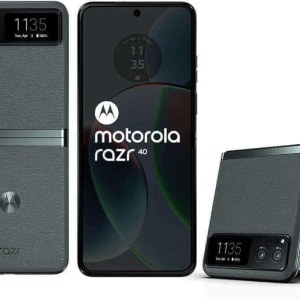
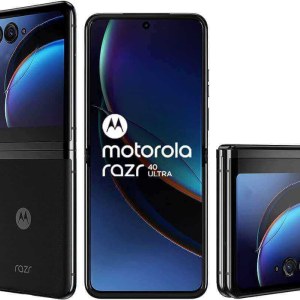
|
|
| Price | ৳80,000.00 ৳135,000.00 |
| Our Rating | |
| Brand | Motorola Motorola |
| Category | Smartphones Smartphones |
General Info
| Announced | 2023, June 01 2023, June 01 |
| Status | Available. Released 2023, June 21 Available. Released 2023, June 05 |
| Brand | Motorola Motorola |
| Model | Motorola Razr 40 Motorola Razr 40 Ultra |
| Color | Sage Green, Vanilla Cream, Grape Compote Infinite Black, Glacier Blue, Viva Magenta |
| Made by | USA USA |
| Price | BDT. 80,000 BDT. 1,35,000 |
Network
| Technology | GSM / CDMA / HSPA / EVDO / LTE / 5G GSM / CDMA / HSPA / EVDO / LTE / 5G |
| 2G Bands |
GSM 900 / 1800 / 1900 - SIM 1 & SIM 2 CDMA 800 / 1900 GSM 900 / 1800 / 1900 - SIM 1 & SIM 2 CDMA 800 / 1900 |
| 3G Bands |
HSDPA 850 / 900 / 1700(AWS) / 1900 / 2100 CDMA2000 1xEV-DO HSDPA 850 / 900 / 1700(AWS) / 1900 / 2100 CDMA2000 1xEV-DO |
| 4G Bands | 1, 2, 3, 4, 5, 7, 8, 12, 13, 14, 17, 18, 19, 20, 25, 26, 28, 34, 38, 39, 40, 41, 42, 43, 48, 66 1, 2, 3, 4, 5, 7, 8, 12, 13, 14, 17, 18, 19, 20, 25, 26, 28, 34, 38, 39, 40, 41, 42, 43, 48, 66 |
| 5G Bands | 1, 2, 3, 5, 7, 8, 12, 20, 25, 26, 28, 38, 40, 41, 66, 77, 78, 79 SA/NSA/Sub6 1, 2, 3, 5, 7, 8, 12, 20, 25, 26, 28, 38, 40, 41, 66, 77, 78, 79 SA/NSA/Sub6 |
| Speed | HSPA, LTE-A (CA), 5G HSPA, LTE-A (CA), 5G |
| GPRS GPRS (General Packet Radio Service) is a packet oriented mobile data service on the 2G and 3G cellular communication system's global system for mobile communications (GSM), Generally, GPRS is used for the purpose of wireless data transfer, such as sharing pictures and videos or browsing the Internet via a mobile phone connection. | |
| EDGE EDGE (Enhanced Data GSM Environment) is a wireless network technology generally considered the next step in the 2G network offers data transfer rates up to four times faster than ordinary GSM networks, Generally, EDGE is used for the purpose of wireless data transfer, such as sharing pictures and videos or browsing the Internet via a mobile phone connection. |
Body
| Dimensions | Unfolded: 170.8 x 74 x 7.4 mm Folded: 88.2 x 74 x 15.8 mm Unfolded: 170.8 x 74 x 7 mm Folded: 88.4 x 74 x 15.1 mm |
| Weight | 188.6 g (6.67 oz) 184.5 g or 188.5 g (6.53 oz) |
| Build | Plastic front (opened), plastic front (closed), plastic back, aluminum frame (7000 series), hinge (stainless steel) Plastic front (opened), glass front (closed, Gorilla Glass Victus), glass back (Gorilla Glass Victus), aluminum frame (7000 series), hinge (stainless steel) |
| SIM SIM (Subscriber Identity Module) is a small card that contains mobile network subscriber's account information. This allows the phone using the card to attach to a mobile network. The SIM card is most commonly associated with GSM and UMTS mobile networks. Moving a SIM card from one phone to another allows a subscriber to switch mobile phones without having to contact their mobile network carrier. SIM cards can also be used by a phone to store limited amounts of data, such as phone numbers and text messages. | Nano-SIM, eSIM or Dual SIM (Nano-SIM, dual stand-by) Nano-SIM, eSIM or Dual SIM (Nano-SIM, dual stand-by) |
Display
| Type Design Type called form factor refers to a mobile phone's size, shape, and style as well as the layout and position of major components of phone. There are three major form factors seen in mobile phones => bar phones, folding phones and sliding phones. | Foldable LTPO AMOLED capacitive touchscreen, 1B colors Foldable LTPO AMOLED capacitive touchscreen, 1B colors |
| Size | 6.9 inches, 107.6 cm2 (~85.1% screen-to-body ratio) 6.9 inches, 107.6 cm2 (~85.1% screen-to-body ratio) |
| Resolution | 1080 x 2640 pixels 1080 x 2640 pixels |
| Refresh Rate | 144Hz 165Hz |
| Protection | - - |
| Pixel Density Pixel Density (PPI) is refers to the concentration of pixels on a particular display, measured in pixels per inch (ppi). Pixel density is calculated by dividing the diagonal pixel resolution of a display by its diagonal size, higher pixel density better display quality. | ~413 ppi density ~413 ppi density |
| Multitouch | |
| Features |
144Hz, HDR10+, 1400 nits (peak) Second external AMOLED, 1000 nits (peak) 1.5 inches, 194 x 368 pixels, 282 ppi, Gorilla Glass Victus 165Hz, HDR10+, 1400 nits (peak) Second external AMOLED, 1B colors, 165Hz, HDR10+, 1100 nits (peak) 3.6 inches, 1056 x 1066 pixels, 413 ppi, Gorilla Glass Victus |
Platform
| Operating System OS => Every computer system run on a base software called Operating System (OS). Operating System controls all basic operations of the computer (such as smartphone, PDAs, tablet computers and other handheld devices). The Operating System allows the user to install and run third party applications (apps), apps are used to add new functionality to the device. | Android 13 Android 13 |
| Chipset Chipset is a group of integrated circuits designed to perform one or a more dedicated functions, often with real time computing constraints, Popular smartphones are equipped with more advanced embedded chipsets that can do many different tasks depending on their programming. | Qualcomm SM7450-AB Snapdragon 7 Gen 1 (4 nm) Qualcomm SM8475 Snapdragon 8+ Gen 1 (4 nm) |
| CPU CPU (Central Processing Unit) mostly known as processors, CPU processes instructions in order to carry out certain functions that make your device operate properly. Processors are often described as the brain of computers, smartphones and tablets, Smartphones and tablets rely on processors to carry out their every task, Processors are an incredibly important factor in selecting any type of computing device, including your smartphone. | Octa-core (1x2.4 GHz Cortex-A710 & 3x2.36 GHz Cortex-A710 & 4x1.8 GHz Cortex-A510) Octa-core (1x3.19 GHz Cortex-X2 & 3x2.75 GHz Cortex-A710 & 4x1.80 GHz Cortex-A510) |
| GPU GPU (Graphics Processing Unit) is a single-chip processor designed to rapidly manipulate and alter memory to accelerate the creation of images in a frame buffer intended for output to a display, This includes things such as lighting effects, object transformations, and 3D motion. | Adreno 644 Adreno 730 |
Memory
| Card Slot Memory Card Slot is a special slot for inserting a memory card. Memory cards allow you to expand the phone's built-in memory, A memory card (sometimes called a flash memory card or a storage card) is a small storage medium used to store data such as text, pictures, audio, and video, for use on small, portable or remote computing devices such as mobile phones, mp3 players, digital cameras. | No No |
| RAM RAM (Random Access Memory) is a type of computer memory that can be accessed randomly, any byte of memory can be accessed without touching the preceding bytes that allows information to be stored and accessed quickly from random locations. RAM is the most common type of memory found in computer systems, smartphones, tablets and other electronic devices. | 8/12 GB 256/512 GB UFS 3.1 |
| Internal Internal Storage is a data storage space (flash memory) mostly used in smartphones, tablets and other electronic devices where operating system, apps, music, photos, videos, files and other user data Is stored. | 128/256 GB UFS 2.2 8/12 GB |
Main Camera
| Camera Resolution |
64 MP, f/1.7, (wide), 0.7µm, PDAF, Laser AF, OIS 13 MP, f/2.2, 120˚ (ultrawide), 1/3", 1.12µm, AF 12 MP, f/1.5, (wide), 1/2.55", 1.4µm, PDAF, OIS 13 MP, f/2.2, 108˚ (ultrawide), 1/3", 1.12µm, AF |
| Camera Features | LED flash, panorama, auto HDR LED flash, panorama, auto HDR |
| Video Resolution | 4K@30fps, 1080p@30/60fps, gyro-EIS 4K@30/60fps, 1080p@30/60/120fps, HDR10+, gyro-EIS |
Selfie Camera
| Camera Resolution | 32 MP, f/2.4, (wide), 0.7µm 32 MP, f/2.4, (wide), 0.7µm |
| Camera Features | Auto HDR Auto HDR |
| Video Resolution | 4K@30fps, 1080p@30/60fps 4K@30/60fps, 1080p@30/60fps |
Sound
| Alert Types | Vibration, MP3, WAV ringtones Vibration, MP3, WAV ringtones |
| Loudspeaker | Yes, with stereo speakers Yes, with stereo speakers |
| Audio Jack |
Connectivity
| WLAN | Wi-Fi 802.11 a/b/g/n/ac/6e, dual-band or tri-band (region dependent) Wi-Fi 802.11 a/b/g/n/ac/6e, dual-band or tri-band (region dependent) |
| Bluetooth Bluetooth is a wireless communications technology for exchanging data between mobile phones, headsets, computers and other network devices over short distances without wires, Bluetooth technology was primarily designed to support simple wireless networking of personal consumer devices. | 5.3, A2DP, EDR, LE 5.3, A2DP, EDR, LE |
| GPS GPS The Global Positioning System is a satellite-based radio navigation system, GPS permits users to determine their position, velocity and the time 24 hours a day, in all weather, anywhere in the world, In order to locate your position, your device or GPS receiver must have a clear view of the sky. | GPS, GLONASS, BDS, GALILEO, QZSS GPS (L1+L5), GLONASS (L1), BDS (B1I+B1c+B2a), GALILEO (E1+E5a), QZSS (L1+L5) |
| NFC NFC (Near field communication) is a set of standards for smartphones and similar devices to establish peer-to-peer radio communications with each other by touching them together or bringing them into proximity, usually no more than a few inches. | |
| Infrared port | |
| FM Radio | |
| USB | USB Type-C 2.0 USB Type-C 2.0 |
Features
| Sensors Sensors are electronic components that detects and responds to some type of input from the physical environment. The specific input could be light, heat, motion, moisture, pressure and location, The output is generally a signal that is converted to use in computing systems, a location sensor, such as a GPS receiver is able to detect current location of your electronic device. | Fingerprint (side-mounted), accelerometer, gyro, proximity, compass, barometer (USA only) Fingerprint (side-mounted), accelerometer, gyro, proximity, compass, barometer (USA only) |
| Messaging | SMS(threaded view), MMS, Email, Push Email, IM SMS(threaded view), MMS, Email, Push Email, IM |
| Browser Web Browser => a web browser is a software application used to locate, retrieve and display content on the World Wide Web, including Web pages, images, video and other files, The primary function of a web browser is to render HTML, the code used to design or markup webpages. | HTML5 HTML5 |
| Java |
Battery
| Battery Type Battery Type => Cell phones run on various kinds of batteries depending on the manufacturer, phone size or shape and features. There are basically four types of cell phone batteries => Lithium Polymer, Lithium Ion, Nickel Metal Hydride and Nickel Cadmium. | Non-removable Li-Po Non-removable Li-Po |
| Battery Capacity Battery Capacity is a measure (typically in Amp-hr) of the charge stored by the battery, and is determined by the mass of active material contained in the battery. The battery capacity represents the maximum amount of energy that can be extracted from the battery under certain conditions. | 4200 mAh 3800 mAh |
| Charging Wireless Charging (Inductive Charging) uses an electromagnetic field to transfer energy between two objects. This is usually done with a charging station. Energy is sent through an inductive coupling to an electrical device, which can then use that energy to charge batteries or run the device. |
30W wired 5W wireless 30W wired 5W wireless |
| Fast Charging | |
| Wireless Charging |
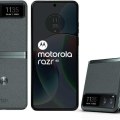
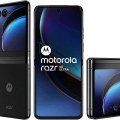
|

